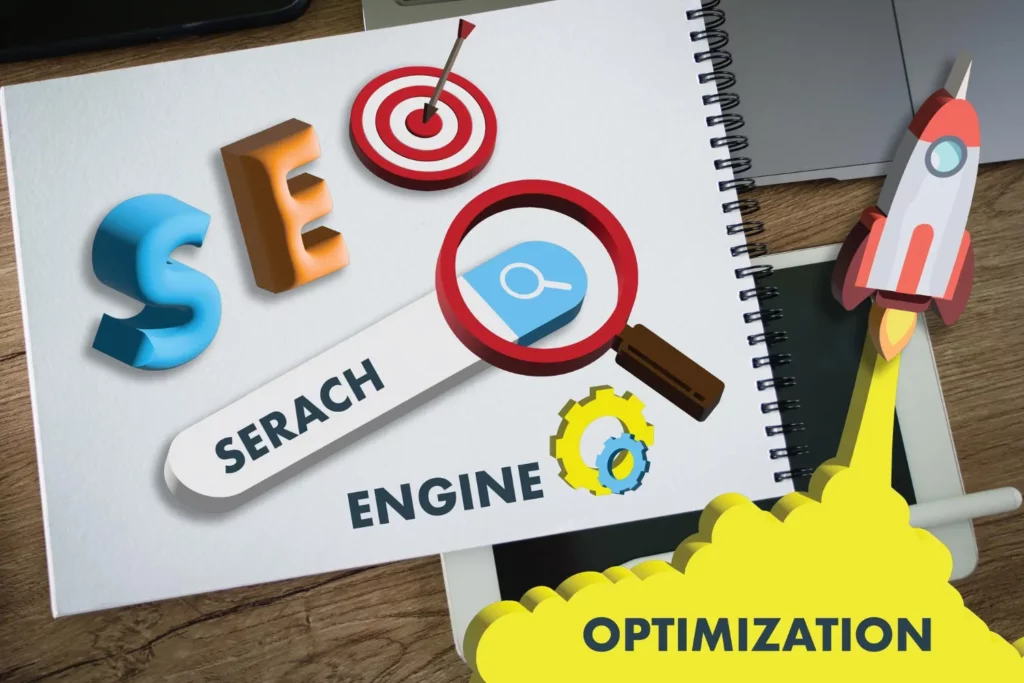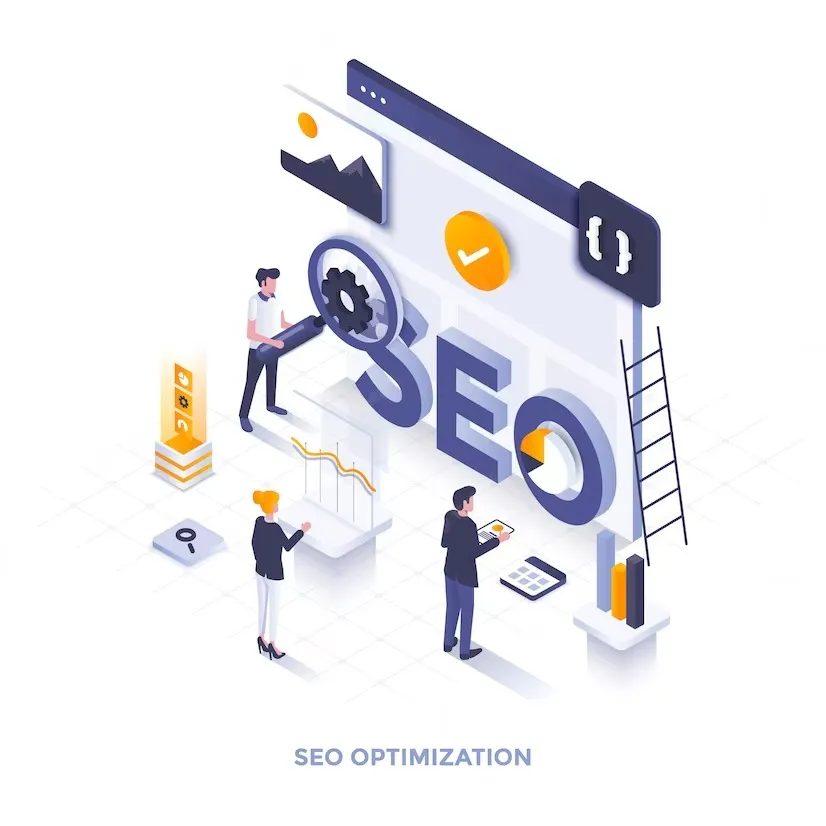Search engine optimization (SEO) and user experience (UX) design are two integral pieces of the puzzle when it comes to successful web design. SEO is the practice of optimizing a website for better visibility and higher rankings in search engine result pages, while UX design is focused on improving user satisfaction and engagement with the site. When these two disciplines are combined, the result is a website that is optimized both for the user and for the search engines. In this blog post, we will explore the symbiotic relationship between SEO and UX design, showcasing case studies of websites that have successfully merged the two.
We will also discuss the best practices for creating a user-centric SEO strategy that puts the user first while optimizing for search engine performance. With the right strategy, you can create an effective website that is both user-friendly and optimized for search engine visibility. So let’s dive into the intersection of SEO and UX, and discover how you can design for a user-centric SEO experience.

Understanding the Relationship Between SEO and UX
When it comes to web design, the relationship between SEO and UX is crucial. While SEO focuses on optimizing a website for search engine visibility, UX design is all about creating a seamless and enjoyable user experience. But how exactly do these two concepts intersect?
At its core, the relationship between SEO and UX is based on the idea that a website should provide value to its users. When a website is designed with the user in mind, it naturally becomes more search-engine friendly. Why? Because search engines, like Google, aim to deliver the most relevant and helpful results to their users. By prioritizing user satisfaction and engagement, a website is more likely to rank higher in search engine result pages.
Enhancing User Experience for Lower Bounce Rates and Higher Conversions
But the connection between SEO and UX goes beyond just user satisfaction. The user experience also plays a role in reducing bounce rates and increasing conversions. When users have a positive experience on a website, they are more likely to stay longer, explore different pages, and ultimately convert into customers or subscribers.
So, the relationship between SEO and UX is all about creating a website that is optimized for both search engines and users. By designing with the user in mind and following SEO best practices, you can create a website that not only ranks well in search engines but also provides a positive and engaging experience for your visitors.

How User Experience Affects SEO Ranking
When it comes to SEO ranking, user experience (UX) plays a crucial role. Search engines, like Google, prioritize delivering the most relevant and valuable results to their users. This means that websites that offer a seamless and enjoyable user experience are more likely to rank higher in search engine result pages.
But how does user experience affect SEO ranking? One key factor is bounce rate. When users have a positive experience on a website, they are more likely to stay longer and explore different pages. This reduces the bounce rate, which is the percentage of visitors who leave a site after viewing only one page. A lower bounce rate signals to search engines that the website provides valuable content and encourages them to rank it higher.
Engagement Matters: The SEO Impact of User Interaction and Trust
User engagement is another important factor. When users engage with a website, such as by commenting, sharing, or making a purchase, it indicates to search engines that the website is trustworthy and relevant. This can improve the website’s ranking in search engine result pages.
Overall, a positive user experience not only keeps users on the website longer but also improves SEO ranking. By designing a website with user satisfaction in mind, you can create a seamless and engaging experience that boosts both user satisfaction and search engine visibility.

Best Practices for Designing a User-Centric Website with SEO in Mind
When it comes to designing a user-centric website with SEO in mind, there are several best practices that can help you create an effective and optimized online presence. Here are some key tips to consider:
Conduct keyword research
Before diving into website design, it’s important to conduct keyword research to understand what terms and phrases your target audience is using to search for information related to your website. By incorporating these keywords strategically throughout your website, you can improve your search engine rankings and attract more organic traffic.
Optimize on-page elements
Pay attention to on-page elements such as meta titles, meta descriptions, header tags, and URLs. These elements provide important information to search engines and can influence your website’s visibility in search results. Make sure to include relevant keywords and create concise, descriptive, and user-friendly meta descriptions that entice users to click on your website.
Prioritize website speed and mobile responsiveness
Users today have little patience for slow-loading websites. In fact, website speed is a ranking factor for search engines. Optimize your website’s speed by minimizing image file sizes, leveraging caching, and using a reliable hosting provider. Additionally, ensure that your website is mobile-friendly and responsive, as mobile-friendliness is another important factor in search engine rankings.
Improve site navigation and user experience
A well-designed website should be easy to navigate and provide a positive user experience. Implement clear and intuitive navigation menus, utilize breadcrumbs, and ensure that important information is easily accessible. Make sure your website is visually appealing, organized, and user-friendly, allowing visitors to find what they need quickly and effortlessly.
Create high-quality, relevant content
Content is a key component of both SEO and UX. Develop high-quality, informative, and engaging content that resonates with your target audience. Use relevant keywords naturally throughout your content and incorporate multimedia elements, such as images and videos, to enhance the user experience. Regularly update and optimize your content to keep it fresh and relevant.
By following these best practices, you can design a website that not only appeals to users but also ranks well in search engine result pages. Remember to constantly monitor and analyze your website’s performance using tools like Google Analytics to make data-driven decisions and continuously improve your SEO and user experience. With a user-centric approach and SEO in mind, your website can become a valuable resource that attracts and retains visitors while driving organic traffic and conversions.

Real-Life Examples of User-Centric SEO Design in Action
Now that we understand the importance of combining SEO and UX design, let’s explore some real-life examples of websites that have successfully implemented a user-centric SEO strategy.
Airbnb
This popular online marketplace for accommodations has mastered the art of user-centric SEO design. By focusing on providing an exceptional user experience, Airbnb has built a user-friendly platform that not only ranks high in search engine result pages but also keeps users engaged. The website offers intuitive search filters, personalized recommendations, and a seamless booking process, all of which contribute to a positive user experience.
Amazon
As one of the largest e-commerce platforms in the world, Amazon understands the importance of user-centric design. The website is optimized for both search engines and users, with a user-friendly interface, easy navigation, and personalized product recommendations. Additionally, Amazon uses advanced algorithms to deliver relevant search results and showcase products that align with the user’s preferences and browsing history.
Moz
Moz is a leading SEO software provider, and their own website is a prime example of user-centric SEO design. The website offers valuable resources, such as informative blog posts, educational guides, and helpful tools, all of which are optimized for search engine visibility. Moz also prioritizes user engagement by encouraging comments, social sharing, and interaction with their content.
Shopify
As a popular e-commerce platform, Shopify understands the importance of user experience in driving conversions. The website is designed with simplicity and ease of use in mind, allowing users to set up and manage their online stores without any technical expertise. Shopify also provides a range of SEO features, such as customizable URLs, meta tags, and sitemaps, to help store owners optimize their websites for search engines.
These examples demonstrate the power of merging SEO and UX design to create websites that are both user-friendly and optimized for search engine visibility. By prioritizing user satisfaction and engagement, these websites not only attract organic traffic but also convert visitors into customers.

Measuring Success: Tracking SEO and UX Metrics
Measuring the success of your SEO and UX efforts is essential to understand how well your website is performing and to make informed decisions for improvement. By tracking specific metrics, you can gain valuable insights into the effectiveness of your user-centric SEO strategy and make data-driven optimizations.
One important metric to track is organic traffic, which represents the number of visitors who find your website through search engine results. Monitoring organic traffic over time can help you gauge the effectiveness of your SEO efforts and identify any patterns or trends that may be affecting your website’s visibility.
Another key metric to consider is the bounce rate. A high bounce rate indicates that users are leaving your website shortly after landing on it, which can be a sign of poor user experience. By analyzing the pages with high bounce rates, you can identify potential issues and make necessary improvements to keep visitors engaged and on your site for longer.
Unlocking Success: Monitoring Conversion Rates for Enhanced Website Performance
Conversion rate is another critical metric to track. It measures the percentage of visitors who take a desired action, such as making a purchase, filling out a form, or subscribing to a newsletter. By analyzing your conversion rate, you can determine if your website is effectively converting visitors into customers or subscribers and identify areas for improvement.
Page load time is a UX metric that can significantly impact both user satisfaction and search engine rankings. Slow-loading pages can lead to high bounce rates and poor user experience. Monitoring and optimizing your page load time can help improve the overall performance of your website and enhance user satisfaction.

Measuring User Engagement: Unveiling Website Performance Through Engagement Metrics
Engagement metrics, such as time on site and page views per session, can provide insights into how users are interacting with your website. By analyzing these metrics, you can determine which pages are performing well and which may need further optimization to increase user engagement.
Finally, user feedback is a valuable source of information for tracking the success of your SEO and UX efforts. Utilize tools such as surveys, user testing, and heatmaps to gather feedback from your website visitors. This feedback can help you understand their preferences, pain points, and areas of improvement, allowing you to make targeted optimizations to enhance the user experience and improve your SEO performance.
By regularly tracking these metrics and analyzing the data, you can measure the success of your user-centric SEO strategy and make data-driven decisions to continuously optimize your website for both user satisfaction and search engine visibility.
on and provide additional evidence or citations to support your claims. Remember, the ultimate goal is to provide valuable and trustworthy information to your audience, so take the time to thoroughly research and vet any content that may be considered borderline.










